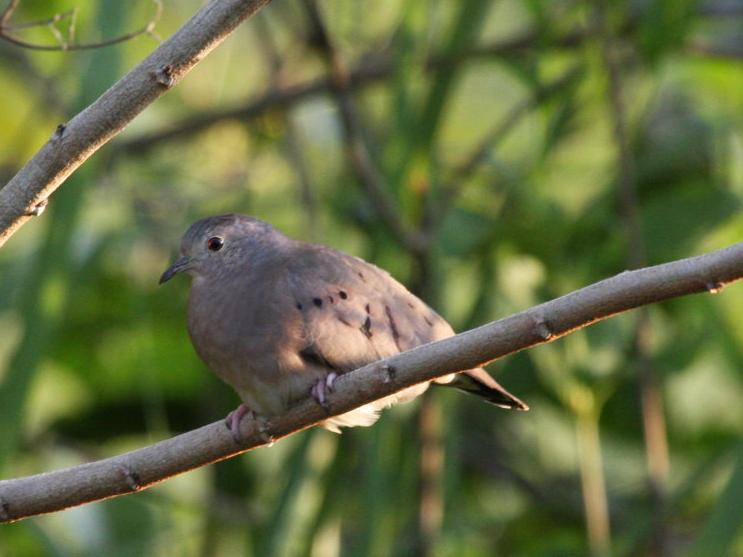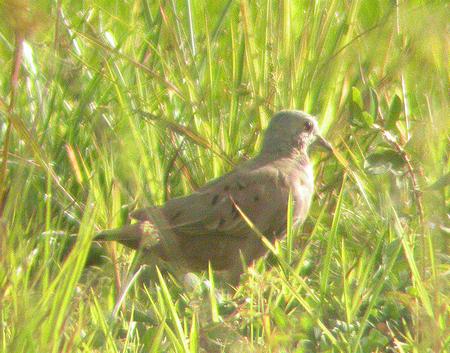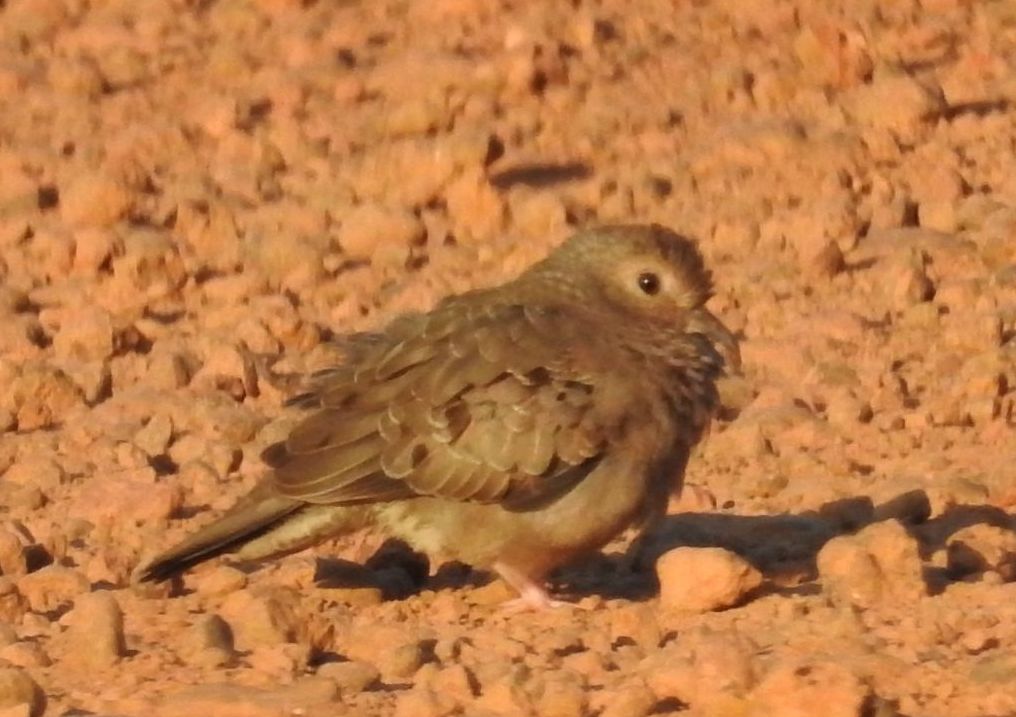 Plain-breasted Ground-Dove (Columbina minuta)
Plain-breasted Ground-Dove (Columbina minuta)
 Plain-breasted Ground-Dove (Columbina minuta)
Plain-breasted Ground-Dove (Columbina minuta) |
 |
| Pictures (click on them to enlarge) | ||
|---|---|---|
 © Carl Beel |  © Erik Toorman |  © Ton Plug |
| Plain-breasted Grond-dove: This species of grounddove is less common then the two other small ones, the ruddy and the common ground-dove. Plain-breasted grounddoves are mainly found in wasteland with dense low vegetation around the city, like at the edge of the campus. They build their nests, made of sticks, in shrubs. It is difficult to tell the females apart from the females of the ruddy ground-dove, but the latter are bigger and have a longer tail and a bit more color and the plain-breasted have dull grey-brown on their rump and upper tail coverts (remark of Rasmus Boegh). Photos of a Plain-breasted ground-dove: The first one made by Carl Beel in his garden on Kwatta near Paramaribo in September 2008, the second one made by Erik Toorman at the university campus of the Anton de Kom university of Paramaribo, Suriname in 2005. Two Plain-breasted Grounddoves were put on video by Dominiek Plouvier. |
| Video (click the link or the 'play'-button to see) | ||
|---|---|---|
| Video recording of a Plain-breasted Ground-Dove © ; |
|
|
||||||||||||||||||||||||||||||||||||||||||||
| Observations through the year | Observations of breeding through the year |
|---|---|
| The 146 reported observations of this bird in Suriname, mainly for the last 50 years up to 2018, have been grouped by month. More birds on one day are counted as one observation. Of course, if the graph should depict the total number of birds seen, the differences between the months could be much more pronounced. | The 19 reported breeding observations of this bird in Suriname. Most observations are about nest with eggs, some about fledglings, or feeding at a nest or the building of a nest. Of the about 5000 nests and eggs found for all species together, about 1/3 comes from the egg collection of Penard between 1896 and 1905. For some reason most collecting then was done in the first half of each year, so the shown distribution does not necessarily reflect the actual breeding preferences. The main dry season in Suriname is reckoned to be from half August to the end of November, the main wet season from half April to half August, but the the timing of begin and end does vary from year to year. Around March a second dry season often occurs. |